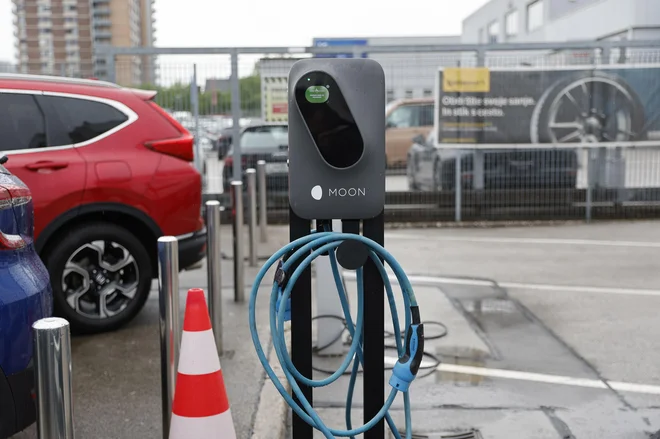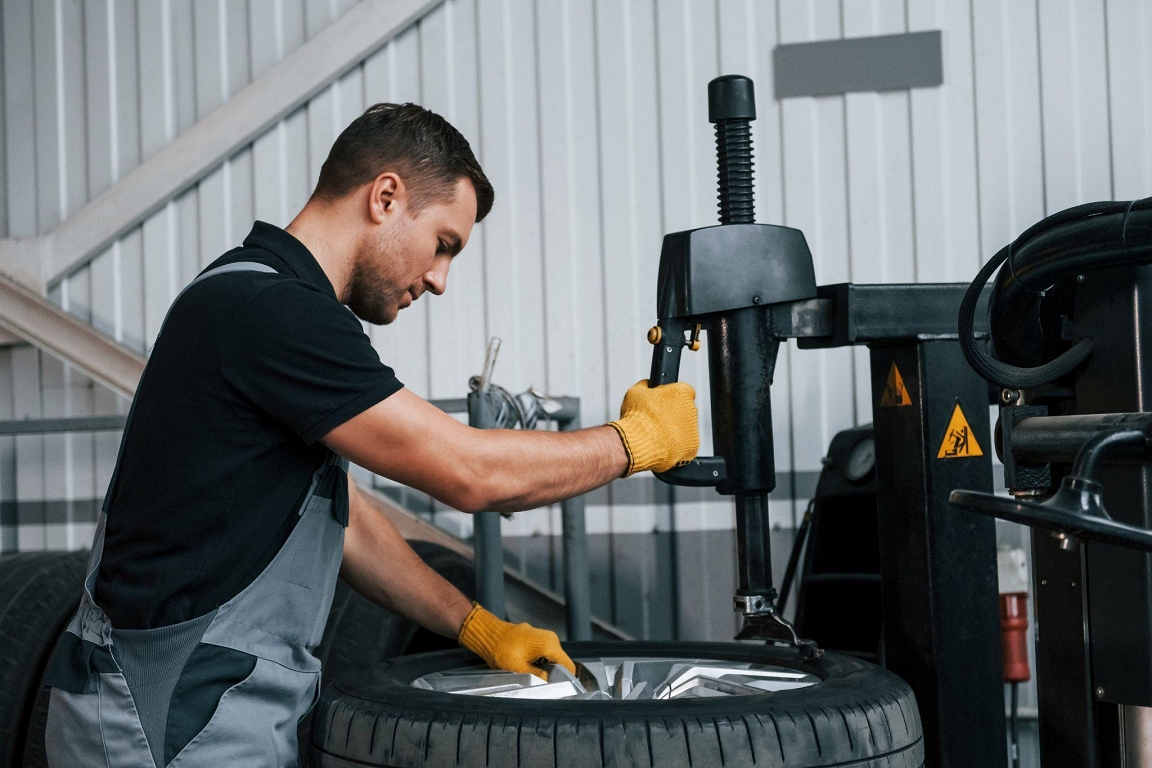The economy calls for eliminating administrative barriers to sustainable mobility

Economy representatives joined forces and jointly formulated the elimination of administrative barriers that inhibit the transition to sustainable mobility in Slovenia. The two countries offer a hand and assistance in forming a stimulating environment for birch transport.
“At the Chamber of Commerce and Industry of Slovenia, we estimate that considerable progress has been made recently in the law to promote the green transition in the field of traffic. Nevertheless, there are some serious legislative obstacles that we address to all those responsible in our country to find pragmatic solutions as soon as possible that will work in practice, « says TZS President Mariča Lah.
“We know very well in the economy that it is not enough to only point out the problems, but it is also necessary to find solutions. That is why we have prepared purely concrete solutions for all identified problems, « he adds Mitja GorenščekExecutive Director of the Chamber of Commerce and Industry of Slovenia.
Among the initiators is the Partnership for the Sustainable Economy CER. “The CER mission is to change the mindset and to promote the transition to a sustainable, climatic and inclusive society, so we are constantly striving to eliminate administrative barriers and the development of systemic solutions that will enable faster introduction of sustainable practices in the economy. In cooperation with decision makers, we strive for changes in various fields – from mobility, construction, biodiversity, circular economy, sustainable communication to the development of competencies and business culture. Today’s challenges are interconnected, so strategic, regulatory, fiscal and mental changes are needed that will allow a comprehensive sustainable transformation, « he explains Ana Struna BregarCER CEO.
As they point out, it is common to all the proposed solutions that they do not require more additional resources, but just some goodwill and activities on the legislator side. “These are measures that the profession proposed years ago. They are mostly transmitted from the strategy to the strategy, receive new labels of measures, only their implementation does not occur. «
Paradox of encouragement by dating
The first initiative relates to long -term financing of incentives for the transition to sustainable mobility. In order for the incentives to be really effective, they must be long -term and predictable, which, of course, does not go without long -term financing. The Law on Infrastructure for Alternative Fuels and Promoting Alternative Fuels in Transport (ZIAG) has therefore already stipulated by amending the Motor Vehicle Duties Act that the funds raised by the annual duty at the time of registering motor vehicles should be used in addition to maintaining roads to promote the passage to alternative fuels in traffic. The law also stipulated that the government up to 1 year. August determines the share of funds raised, which will be used to promote alternative fuels in traffic next year. But in practice, unfortunately it gets stuck.
Electric Vehicle Chargers- Photo: Leon Vidic/Work
“Last year, the government decided to devote only as much funds to promoting alternative fuels in traffic as it has collected from charges for battery electric vehicles. This means that in Slovenia we have loaded electric vehicles with a charge, and then these same assets are used to promote electric vehicles. So we are burdening something with the intention of encouraging the same! ”He explained Slavko Ažman From the Section for Passenger Motor Vehicles at the TZS and a member of the CER Board of Directors.
It also means that even in 2025, Slovenia will not earmark the euro of the electromobility from the funds raised from the funds raised, and in 2026 only a very symbolic sum. « This was by no means the purpose of the Infrastructure Act for Alternative Fuels and Promoting the transition to alternative fuels in traffic, but that such an important area for the green transition of the entire society is provided by a systemic source of funds, » says Slavko Ažman.
Therefore, they proposed that the Government should determine the actual percentage of total funds in the Decree on the Annual Consignment of Road Transport, which will be adopted this year, as provided for by the law mentioned, that sustainable mobility is allocated 5 percent of the funds raised.
“The burden of promoting the transition to electric mobility must be divided into all vehicles, since if it is divided into 1.2 million passenger cars, the load can be symbolic, just a few euros per vehicle. Just like contributions to renewable energy sources, not only the owners of solar power plants, but all electricity users, of course, make no sense that electric vehicles are burdened with a duty, which is then used to promote them. «
True checking the number of electric vehicles
Accelerated fleet electrification is also crucial for the achievement of the country’s emission goals in the field of traffic, so it is important to check the number of registered electrical and other alternative drive vehicles ongoing. This allows for ongoing monitoring of goals, determining the effectiveness of measures and, if necessary, adapting individual measures.
However, according to Ažman, nevertheless in Slovenia, from the official record of registered vehicles, it is still not possible to directly obtain information on the number of individual types of electric vehicles. “The records of registered vehicles (DRU) does not contain a unique mark, which would be used to know for each vehicle specifically whether it is a battery electric vehicle, a plug -in hybrid or another type of alternative vehicle. In Slovenia, the analysis of the fleet must therefore be helped by combining a large number of criteria such as engine volume, electric motor type, power power or voltage and power battery capacity, trying to separate battery electric vehicles from plug -in hybrids and from mild hybrids, « says the interviewee.
He adds that this is not only time -consuming, but also means that everyone comes up with a slightly different number of vehicles in each category, which is certainly not good. However, the solution is simple, namely that an additional field for an alternative drive is included in the VRML database.

The burden of promoting the transition to electric mobility must be divided into all vehicles. Photo: Leon Vidic/Work
Charging stations in multi -dwelling buildings
In mid -May, the government intervened in a legislative procedure the amendment of a housing law, which addresses a pressing housing problem, but at the same time forgets obstacles to the installation of filling infrastructure in multi -dwelling buildings. As he points out Mirela ZupančičThe head of the Moon at Porsche Slovenia is the installation of the charging infrastructure for electric vehicles especially demanding in multi -dwelling buildings, as the installation also hinders, among other things, the required three -quarters of co -owners’ approvals.
“Therefore, modeled on arrangements in other European countries, especially in Germany, we propose a reduction of the required consent of co -owners from three -quarters to more than half. In addition, in cases of ownership parking spaces, it is also suggested that an individual condominium owner be allowed to set up charging stations without the consent of other condominium owners, if it is ensured by compliance with the regulations in the field of fire safety and bears the costs of implementation and maintenance. Now that the housing law is already opening up, it is, of course, the ideal opportunity to settle this pressing problem at the same time. «
To reintroduce subsidies for hybrid vehicles
The interlocutors also particularly point to the fact that Slovenia is far behind the planned number of connecting electrical hybrids (PHEV) in use, although the achievement of the target number of such vehicles is crucial for the successful intake of increasing CO2 emissions from transport. The strategy for alternative fuels in traffic has anticipated that by 2020 we need a good 6,000 plug -in hybrids and by 2025 about 26,600.
« We missed the target for 2020 by as much as 84 percent, but subsidies for plug -in hybrids have been eliminated this year, » explains Slavko Ažman, adding that this year does not show better for this year, as we are likely to achieve the number of plug -in hybrids that should be reached five years ago by the end of the year. As he explains, the solution would be to reintroduce subsidies for hybrid vehicles.
Slovenia has funds from the climate fund, the recovery and resistance plan for such measures, and, last but not least, from the annual motor vehicle. Although Germany is abolishing these subsidies, it has largely achieved its goals for the electrification of the fleet. Slovenia, however, is 80 percent behind the plug -in hybrids.
In addition, the excuses are that the plug -in hybrids are not organic, since they mostly drive on fossil fuels, they also do not withstand judgment, as they really reduce CO2 emissions, and also allow you to get to know the charging infrastructure and the way of driving electric vehicles. “It is true, however, that in the EU, on average, plug -in hybrids make a smaller proportion of all electricity routes than intended. This fact is taken into account in the new calculation of emissions, which will nevertheless be 60 to 70 percent lower than in comparable petrol and diesel cars, « the interviewee explains.
And another B category driving test
Since 2018, the profession has also pointed to the necessary changes to the conditions for the use of electric carcasses with a normal Bategory B driver exam. Due to the weight of the battery, electric light delivery vehicles are heavier than comparable internal combustion vehicles, so they usually exceed the restrictions for their use with the driving test of category B.
“Although the solution is simple and does not require additional financial resources, and although it has been involved in all relevant strategic documents since 2019, it has been re -moved by 4 to 5 years with the renovation of the NEPN. The measure was ranked in the revamped NEPN in December 2024, but it was supposed to be adopted only within three years from the beginning of the European Directive – the latter is only under adoption. For example, while in Germany, a comparable arrangement, which allows vehicles to drive up to 4250 kg (instead of 3500 kg) with a category B driver’s license, if the vehicle is partially or fully driven by alternative drive (electricity, hydrogen, also other alternative fuels) ten years ago. The adoption and transfer of the European Directive could therefore be subject to national legislation, especially since its acceptance is already late for five years, « explains Slavko Ažman.
He adds that the aforementioned by changing or supplementing 62. “This would allow the normal use of battery electric vehicles and plug -in hybrids. The latter are important because of reach, as they allow for longer distances and the use of cleaner and more efficient electric drive in the urban environment. «








:format(jpeg):fill(f8f8f8,true)/s3/static.nrc.nl/taxonomy/bf9b707-commentaar-itemafbeelding-2024.png)